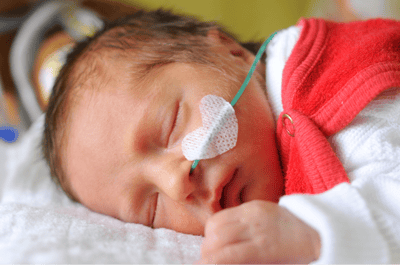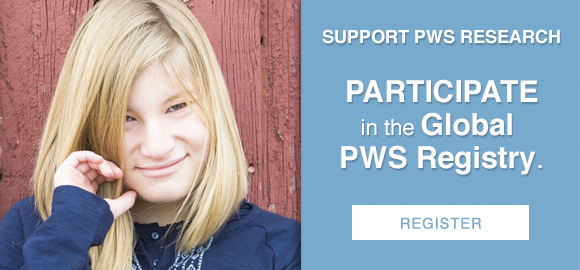A paper has just been published that provides new insight into the use of feeding tubes in babies with PWS, thanks to the participation of ~350 families who completed the “Feeding Tube Survey” in the Global PWS Registry. Drs. Sani Roy, Ann Scheimann, Lusine Ambartsumyan, Samson Cantu, and Jessica Duis, and colleagues Deborah Rafferty, Amy Trejo, and Luke Hamilton, along with Jessica Bohonowych and Theresa Strong from the FPWR team, examined the responses to the survey to gain a better understanding of how feeding tubes are used and what complications can arise. The findings are published in the American Journal of Medical Genetics: Feeding tube use and complications in Prader-Willi syndrome: Data from the Global PWS Registry.

Babies with PWS typically don’t have a strong and coordinated ‘suck and swallow’ response, so feeding tubes are often used to ensure that the baby gets enough nutrition to grow appropriately. Feeding tubes can also reduce the risk of aspiration events (liquid going ‘down the wrong pipe’ into the lungs). This study looked at the different kinds of feeding tubes that have been used in babies with PWS, how satisfied parents were with their use, and what kinds of complications occurred with different feeding tubes.
As expected, most parents reported that their child with PWS had used some kind of feeding tube in infancy (~77%). Most often, this was an NG tube (nasogastric, through the nose into the stomach) only (~70%), while ~5% used a gastronomy (G) tube only (a surgically placed tube that goes directly into the stomach), and the remaining 25% used both an NG and G tube at different times. Regardless of which type of tube was used, most parents (75% or greater) felt that the use of the feeding tube had a positive impact on the quality of life (as anyone who has spent hours trying to get a sleepy baby with PWS to finish a bottle can probably appreciate). However, there were some important differences in why tubes were placed, the length of use, and the rate of complications between NG and G tubes in this sample.
Whereas the most common reason for placement of both NG and G tubes was “feeding difficulties and/or poor weight gain," G tubes were more often placed because of concerns about aspiration and were used for significantly longer than NG tubes. The majority of babies using NG tubes only stopped using the tubes between 3-6 months of age, with <5% still using the NG tube at one year of age. In contrast, about half of babies with G tubes still had those in place at a year old, perhaps reflecting the more complicated removal procedure and a desire to be sure that it was no longer needed before removal.
Minor complications (e.g., skin irritation, tube pulled out, clogged tube) were fairly common for both NG and G tube use, but severe complications were more common in those with G tubes. While the severe complication rate was 1.2% for NG tube use, it rose to 31.7% for those with G tubes. Severe complications for G tubes included more significant skin infections, surgical repair needed for persistent leakage at the tube site, and rare, single cases of intestinal or esophageal rupture that required surgery or medical care.
By looking at how old the child with PWS was at the time the survey was completed, it was possible to look at G tube use over the years. Interestingly, at least for this sample, placement of G tubes generally increased over time, with the highest percentage of G tube use in children who were 5–14 years old at the time of survey submission, so those born in the 2008–2017 timeframe. Another interesting finding was that of the respondents who lived outside the US (18% of respondents), none reported the use of G tubes; only NG tubes were used.
There are a few conclusions and recommendations that can be drawn from the findings. Given that feeding difficulties don’t usually persist for an extended period in babies with PWS and that there was a considerably higher complication rate with G tube use in this study population, the authors recommend that NG-tube use be strongly considered over G-tube use in newborns with PWS. That said, a clinical concern about aspiration might be a reason to consider G-tube placement. It’s important to note that the early introduction of speech and occupational therapy with a focus on improving feeding issues may shorten the overall length of time that tubes are needed. Finally, a multidisciplinary team, preferably one with PWS experience, should guide the decision-making process about whether or not to place a tube and which tube to place in babies with PWS.
This publication is an excellent example of how participation in the Global PWS Registry directly contributes to improved care for individuals with PWS. Now that this paper is available, any clinician caring for a newborn with PWS can use it as an important resource to help them in their decision-making about what type of feeding assistance to use to ensure the baby gets the nutrition they need while minimizing potential complications.








